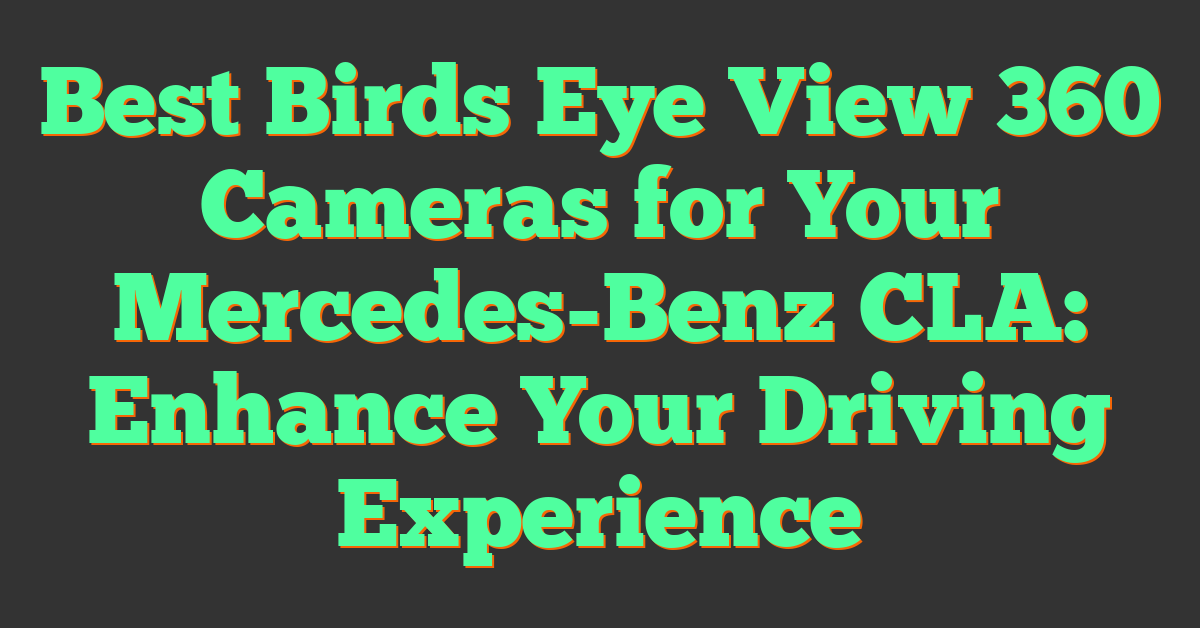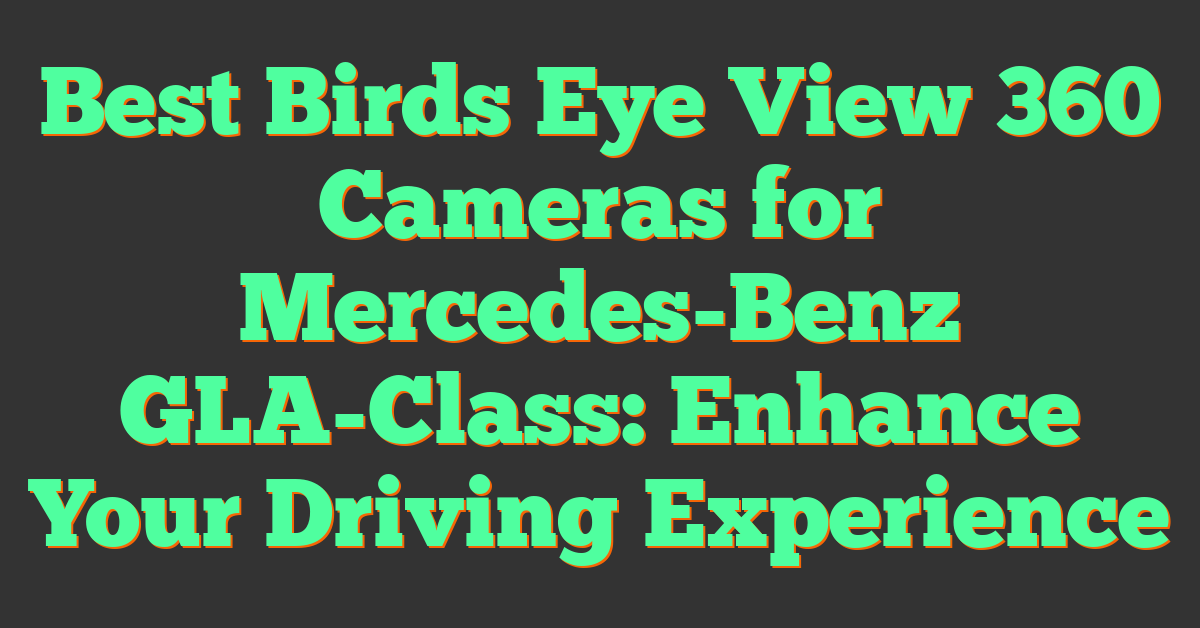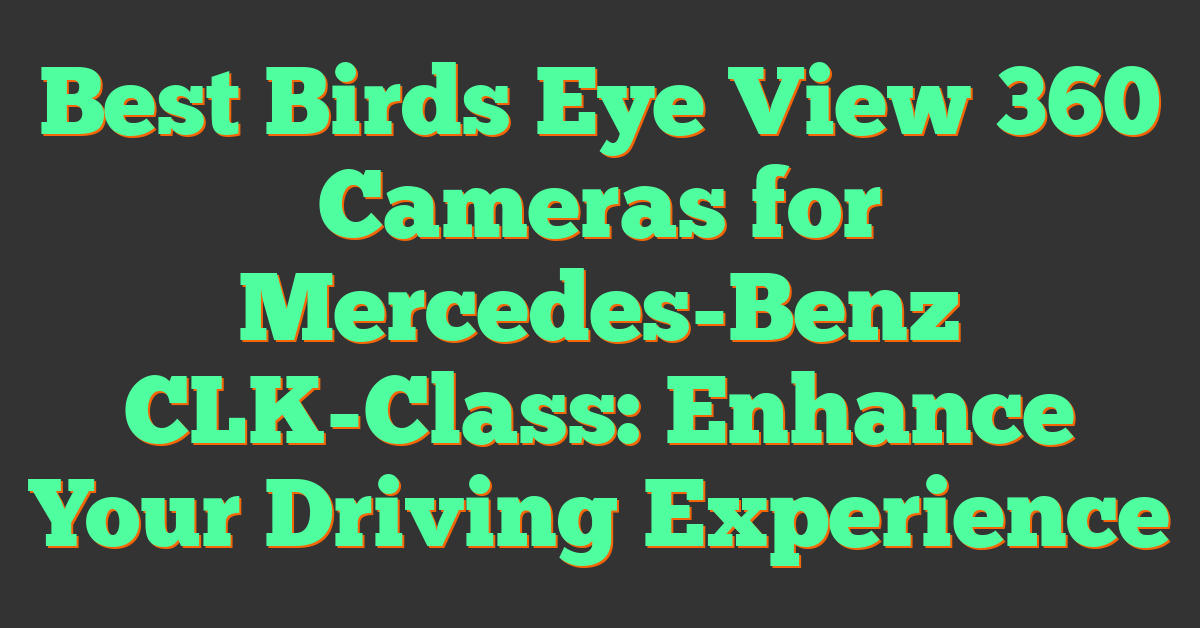Key Takeaways
- Night vision 360 cameras combine 360-degree imaging with advanced technologies like infrared (IR) illumination and low-light sensors to capture clear visuals in complete darkness.
- Infrared technology enhances visibility by using IR LEDs to illuminate dark environments, while advanced sensors like back-illuminated CMOS improve image clarity and reduce noise.
- Features like HDR processing, motion detection, and multi-lens setups ensure seamless visuals, balanced exposure, and dynamic subject tracking, even in challenging lighting conditions.
- These cameras are versatile, catering to diverse uses such as security surveillance, outdoor adventures, and professional videography, offering immersive spherical coverage without blind spots.
- Smart integration with devices like drones, VR systems, or smartphones enhances usability, convenience, and creative potential, making them ideal for modern applications.
- Choosing the right camera depends on factors like low-light performance, resolution, durability, smart features, and budget to meet specific needs and project requirements.
Ever wondered how night vision 360 cameras manage to capture clear, detailed images in complete darkness? These innovative devices combine cutting-edge technology with precision engineering to provide unparalleled visibility, no matter the lighting conditions. Whether it’s for security, outdoor adventures, or professional filming, they’re revolutionizing how we see the world after dark.
What Are Night Vision 360 Cameras?
Night vision 360 cameras combine immersive 360-degree imaging with low-light or no-light visibility. These cameras capture spherical photos and videos, offering a full field of view that eliminates blind spots. Equipped with night vision capabilities, they produce clear visuals in dark environments using infrared (IR) technology or advanced low-light sensors.
Infrared illumination is integral to most night vision 360 cameras for recording in complete darkness. Invisible IR lights illuminate the scene, which the sensors convert into detailed grayscale or color images. Some high-end models, like those used in professional videography, pair this with HDR to enhance quality in dim environments.
Advanced lenses and multiple sensors significantly improve capture quality. These components work together to merge visuals seamlessly, ensuring there are no visible stitching lines in the final output, even when filming in pitch-black surroundings.
Using these cameras, creators can document nighttime landscapes, urban exploration, or immersive storytelling scenes without compromising on clarity. For example, I’ve used these to cover nighttime events where standard cameras failed to capture usable footage.
How Do Night Vision 360 Cameras Work?
Night vision 360 cameras combine cutting-edge technology to capture high-quality spherical visuals in complete darkness. Using infrared technology, low-light image processing, and advanced optical sensors, they overcome the challenges of nighttime photography and videography.
Infrared Technology
Infrared (IR) technology enables night vision 360 cameras to function effectively in total darkness. These cameras use IR LEDs to emit infrared light, which is invisible to the human eye but detectable by the camera’s sensors. When recording, the IR light illuminates the environment, allowing detailed image capture even with no natural or artificial light. Some models integrate intelligent IR systems that adjust illumination intensity based on object distance, preventing overexposure in close-range shots.
Low-Light Image Processing
Low-light image processing enhances existing illumination to produce clear and color-accurate visuals in dim environments. Through advanced algorithms, the camera’s processor identifies and amplifies faint light sources while reducing noise, a common issue in nighttime photography. HDR processing is often employed to balance exposure across the entire 360-degree view, ensuring that both bright and dark areas within the frame retain optimal detail.
Advanced Optical Sensors
High-sensitivity optical sensors are central to the performance of night vision 360 cameras. Sensors like CMOS and back-illuminated CMOS capture and amplify minimal light to create sharp images and videos. These sensors often feature larger pixel sizes to collect more light per pixel, improving performance in low-light conditions. Multi-sensor setups in 360 cameras further enhance capture quality by blending data from multiple lenses to deliver seamless, low-noise spherical visuals.
Key Features Of Night Vision 360 Cameras
« Top Professional 360 Cameras for Live Streaming That Deliver Stunning Quality and Immersive Content
Top Security 360 Cameras with Motion Detection for Ultimate Home and Business Protection »
Night vision 360 cameras combine cutting-edge technology with features tailored for photographers, videographers, and content creators. Their capability to capture immersive, detailed visuals in every direction, even in low light, sets them apart. Here’s a closer look at their standout features.
Full 360-Degree Coverage
These cameras deliver seamless spherical imagery, leaving no blind spots. Advanced multi-lens setups stitch images together with precision, ensuring smooth, continuous visuals. For example, professional-grade models like Insta360 Pro 2 use 6 lenses to create high-resolution 8K footage across every angle. This capability enhances creative freedom, especially in scenes where comprehensive coverage is essential, such as outdoor events or cinematic sequences.
High-Quality Night Vision Capability
Low-light performance relies on a combination of infrared illumination and advanced image sensors. Many cameras feature back-illuminated CMOS sensors, which amplify faint light without sacrificing detail. Infrared LEDs, often invisible to the human eye, enhance visibility in complete darkness. Some models also apply HDR processing, which balances light and shadow, perfect for nighttime cityscapes or astrophotography. These capabilities make them indispensable for capturing clear visuals in challenging lighting.
Motion Detection And Tracking
Night vision 360 cameras often include motion detection algorithms for faster subject tracking. Algorithms in models like Ricoh Theta X can detect and follow movement, ensuring focus stays on the action. This feature benefits videographers shooting dynamic subjects, like wildlife at night or moving vehicles. Combined with 360-degree visuals, motion tracking eliminates the need for additional manual adjustments or multiple shoots.
Integration With Smart Systems
Compatibility with smart ecosystems transforms these cameras into versatile tools. For instance, some cameras sync with smartphones, drones, or VR headsets for real-time monitoring and control. Integration with cloud services allows creators to upload and edit footage on the go. Features like voice activation or AI assistance simplify the shooting process, especially during demanding night scenes. Smart compatibility enhances both convenience and efficiency, expanding creative possibilities.
Benefits Of Night Vision 360 Cameras
Night vision 360 cameras redefine what’s possible in low-light and immersive photography. By enabling spherical captures in complete darkness, they open countless creative, professional, and security opportunities.
Enhanced Security
Night vision 360 cameras provide comprehensive surveillance for homes, businesses, and outdoor setups. Unlike traditional cameras with limited fields of view, they deliver complete 360-degree coverage, eliminating blind spots. Features like motion detection and real-time monitoring enhance their security potential. For example, I’ve used a camera with infrared illumination to monitor a remote property, and the clarity captured in pitch-black conditions was outstanding. These cameras allow users to maintain awareness, whether it’s protecting assets or monitoring perimeters at night.
Versatility In Applications
Night vision 360 cameras cater to diverse creative and professional needs, from photographing remote nighttime landscapes to filming immersive VR content in low-light urban settings. I’ve created virtual reality experiences by capturing nocturnal scenes using advanced low-light sensors, which preserved details without compromising resolution. Professionals also use these cameras for live events, wildlife photography, and architectural documentation under challenging lighting. Their compatibility with drones or VR systems adds adaptability, making them indispensable for innovative projects.
Improved Visibility In Darkness
Optimal performance in total darkness sets night vision 360 cameras apart from standard gear. Technologies like back-illuminated CMOS sensors and infrared illumination allow photographers and videographers to capture sharp images and smooth footage in near zero-light environments. When I documented a stargazing experience, my camera’s HDR function balanced exposure perfectly across the sky’s vast 360-degree view. This level of visibility transforms how creators work at night, ensuring scenes retain clarity and depth regardless of external lighting conditions.
Popular Use Cases
Night vision 360 cameras excel across various scenarios, combining spherical imaging with exceptional low-light performance. Their versatility makes them indispensable for security, adventures, and creative projects.
Home Security
Night vision 360 cameras redefine home security with comprehensive coverage and advanced monitoring features. I’ve used them to eliminate blind spots entirely, thanks to their panoramic imaging. Infrared illumination ensures detailed visuals even in complete darkness, while motion detection alerts focus on potential threats.
Some models integrate seamlessly with smart systems, enabling real-time access through apps or VR headsets. This lets users monitor their homes remotely with an immersive perspective, creating a foolproof security setup. When I tested these in a residential setup, features like two-way audio and automated recordings added even more layers of protection.
Business Surveillance
Businesses benefit from enhanced security, especially for large spaces prone to blind spots. I’ve seen many corporate environments adopt night vision 360 cameras to oversee warehouses, parking lots, or office floors. Their ability to provide a full 360-degree view ensures no area is left unchecked.
Features like high-sensitivity CMOS sensors and HDR processing are particularly effective in capturing clear visuals under minimal lighting. Many cameras also include video analytics to detect unusual activities, reducing the need for constant human monitoring. For businesses, the combination of real-time tracking and storage integration offers not only security but also operational insights.
Outdoor Adventures
For photographers and adventure enthusiasts like me, night vision 360 cameras open new creative possibilities. They’re indispensable for documenting nighttime hikes, urban explorations, or capturing starry landscapes. The integration of infrared technology with multi-lens setups ensures that every shadowy detail is preserved.
I’ve used these cameras mounted on a tripod or a drone to capture VR-ready footage, creating fully immersive experiences. Their rugged, weatherproof designs make them suitable for extreme conditions, ensuring reliable performance during adventurous shoots. Add-ons like voice controls or remote app access simplify operation in challenging environments, letting you focus on the scene instead of the equipment.
Choosing The Right Night Vision 360 Camera
Selecting a night vision 360 camera requires balancing technical features with your specific needs as a creator. I focus on versatility, performance in low-light conditions, and ease of use when evaluating options.
Low-Light Performance
Ensure the camera handles minimal light effectively. Models with back-illuminated CMOS sensors or advanced low-light image processing provide sharper results in dark environments. Check for IR technology with powerful infrared LEDs for recording in complete darkness.
Resolution and Frame Rate
High resolution is essential for clear 360-degree content. Look for at least 4K video resolution for detailed footage. A minimum frame rate of 30 fps works for most projects, but 60 fps or higher is ideal for smooth motion in action scenes.
Lens and Stitching Quality
Opt for cameras with high-quality multi-lens systems that minimize stitching lines. Poor stitching disrupts immersion in 360-degree visuals. Advanced models use precise algorithms to blend images seamlessly.
Smart Integration
Features like app connectivity, real-time monitoring, and voice control are incredibly helpful. I value cameras compatible with VR systems or drones, as they expand creative opportunities and simplify workflows.
Portability and Durability
If you’re shooting outdoors, choose lightweight models with weatherproof designs. Cameras rated IP67 or above resist water and dust, ensuring reliability in challenging conditions.
Battery Life and Storage
Select a camera with long battery life to avoid interruptions during nighttime shoots. Built-in or expandable storage capacity is also crucial for recording high-quality 360-degree content over extended sessions.
Budget Considerations
Set a budget that aligns with your needs. Entry-level models start around $300, offering basic night vision capabilities, while high-end models with advanced features can exceed $1,500. Invest in a model that fits your workflow and future projects.
Knowing your style and intended use simplifies the decision-making process. For me, capturing vivid night scenes seamlessly is always the top priority.
Conclusion
Night vision 360 cameras have redefined what’s possible in capturing visuals in complete darkness. Their innovative blend of infrared technology, advanced sensors, and seamless 360-degree imaging opens up new opportunities for security, creativity, and exploration. Whether you’re securing your property, filming immersive content, or documenting nighttime adventures, these cameras deliver unmatched performance in low-light conditions.
Choosing the right model tailored to your needs ensures you can fully harness their potential. With their ability to eliminate blind spots and produce stunning visuals, night vision 360 cameras are game-changers for anyone looking to push the boundaries of what’s achievable after dark.









